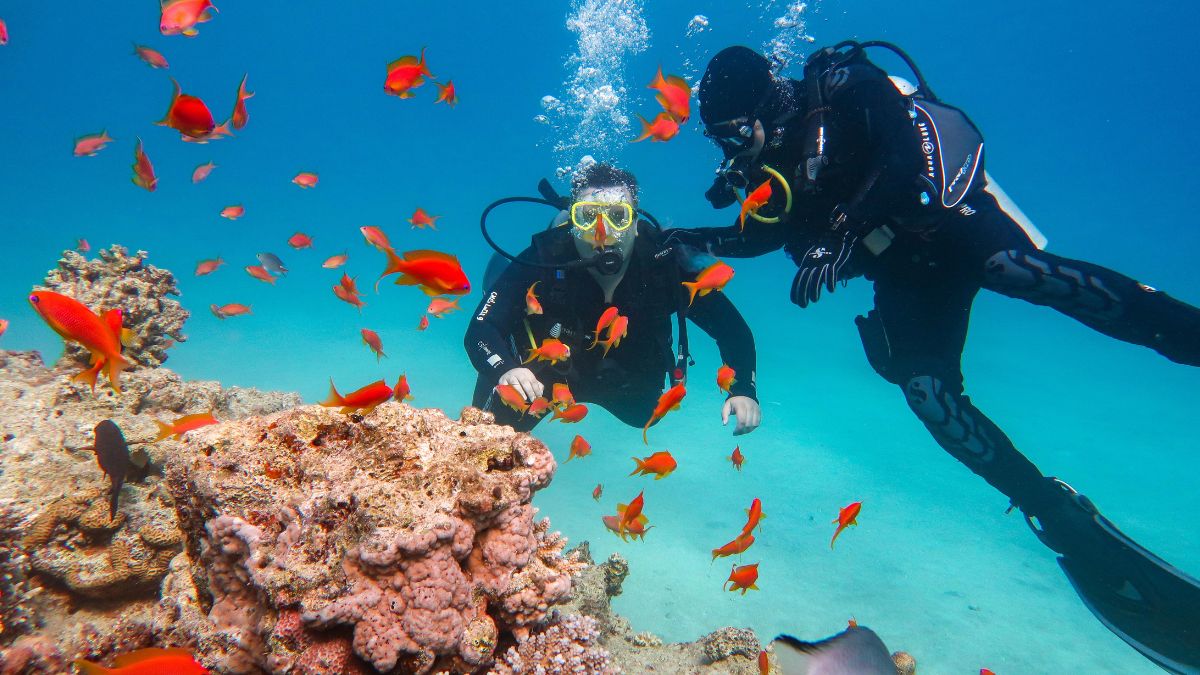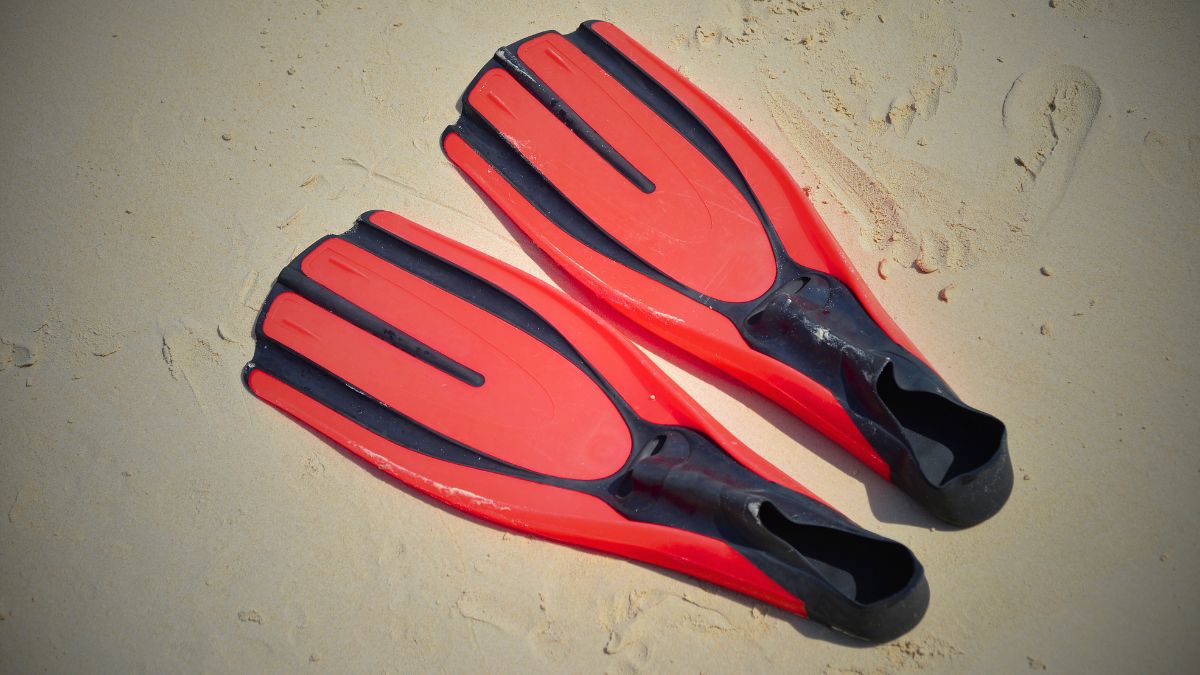Diving in the cenotes of the Yucatan is a unique experience. The visibility here is breathtaking, as well as the underwater rock formations. What are cenotes? What is unusual about them and why is diving there so special? This is what you will find out straightaway in our article.
What are cenotes and how they were formed?
Cenotes are natural karst wells, formed in limestone rocks. So water inside them is pure due to filtration through the limestone bedrock.
They were formed during last glaciation. Uncovered limestone rocks were exposed to water during the rains. A drops drills into the rock, and in this case each drop caused small cracks and gaps that deepened over time and formed wells. Over time, water dripping down the edges of the opening further created an interesting flowstone pattern.
While climate warmed and ocean levels rose. Consequently excavated passages and caves were flooded with water. The effects of this process are known today as cenotes and can be seen on the Yucatan Peninsula in Mexico.
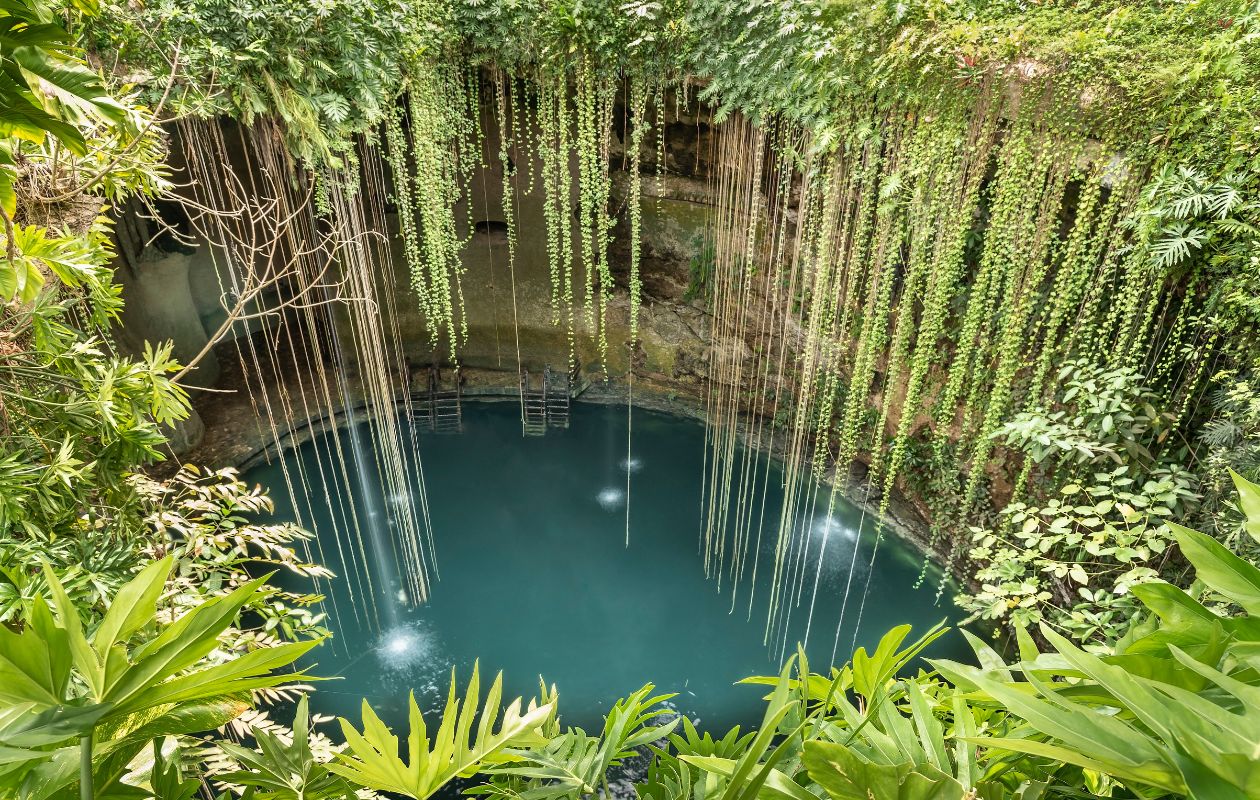
These wells were the basic source of clean water for the Mayans, and some cities were built around them. For the Maya, cenotes also had religious significance. According to their beliefs, the rain and water god Chaaka resided in them. They also believed that cenotes led to the afterlife.
All of the cenote corridors can be about 500 kilometers in total, and today they perform tourist and recreational functions. People come from all over the world to relax by the cenotes or dive in them.
Cenotes in Yucatan
There are thousands of cenotes in Yucatán. Although most of them have not yet been explored. They are divided into three types. Closed ones are located completely underground, semi-open ones are in caves with an opening in the wall or ceiling. Open cenotes are above ground and are usually covered with lush vegetation.
Underground passageways stretch for miles, connecting cenotes to each other. Sunlight magnificently plays in the water, falling through rocky openings into semi-open wells and shining through plants in the open caves. The corridors are full of interesting formations, stalactites and stalagmites.
In some cenotes there is fresh and salt water at the same time. Thus, one can observe the phenomenon of halocline. Passing through it, you have the impression of passing through a fog.
In some cenotes you can see freshwater fish and turtles, and in others there is amazing vegetation. If you’re lucky, you’ll also see remnants of Mayan sacrificial ceremonies or their ancient ceramics.
Diving in cenotes – why it’s worth it
This is a unique experience for any diver. The water here is perfectly clear, and the visibility is just perfect. The Yucatan is the place with the greatest number and variety of such spots on the globe.
The interior of each cenote is different, but elements in common are the fanciful limestone formations, dense underwater vegetation and the tunnel systems you’ll travel through.
A magical spectacle of lights and spectacular stalactites and stalagmites are waiting for you underwater. Long underwater corridors, distinct haloclines and layers of hydrogen sulfide near the bottom, underwater clusters of shrubs, meadows of water lilies, schools of fish – diving in such unique places is an unforgettable experience.
Diving in cenotes – practical information
You can dive in cenotes all year round, but the best time is from May to September. Visibility reaches 50 m, and the water temperature exceeds 25°C/77°F.
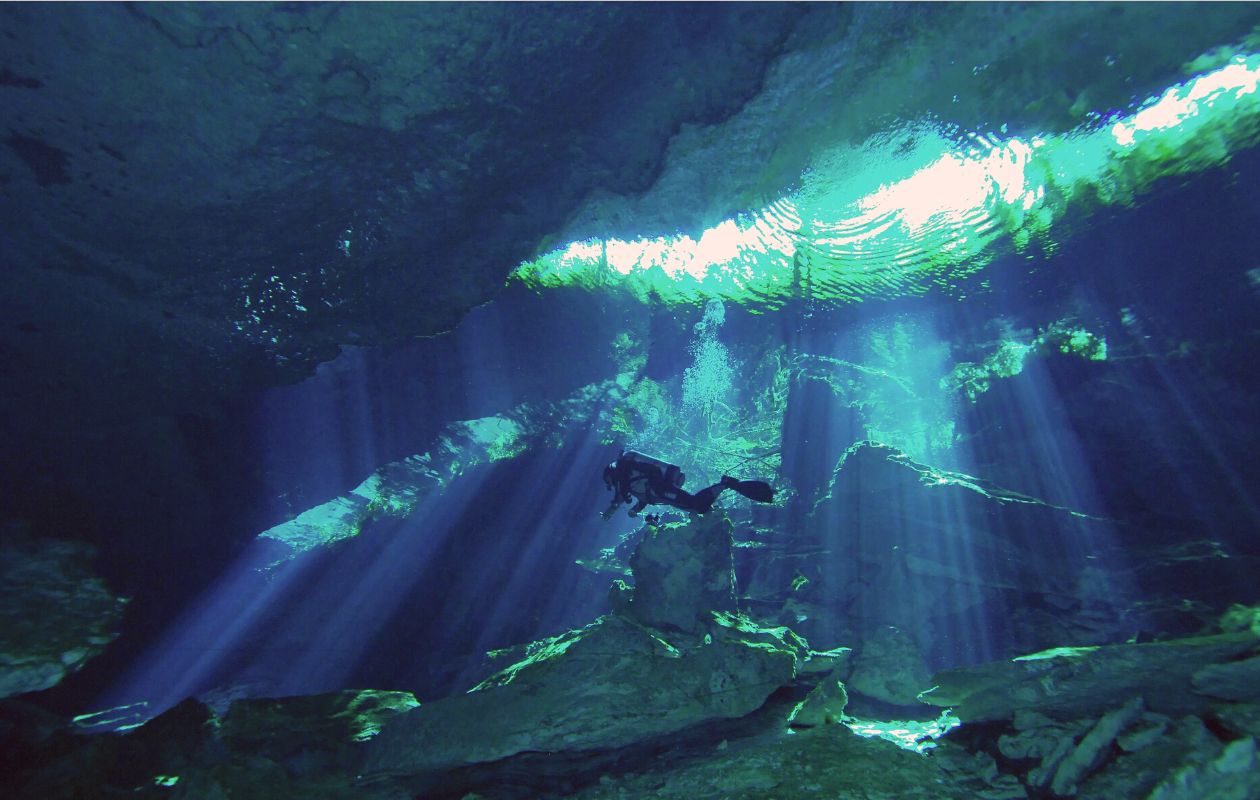
If you intend to dive in the caves, take a flashlight and buoys with you. When diving in Mexico, also bring your diving certificate, health certificate, logbook and INT adapter.
Well diving is mainly for divers of all levels. Anyone with a basic certification from a diving organization can go underwater here. However, be careful not to pick up sediment from the bottom and be especially gentle on underwater rock formations.
Deeper cenotes are marked as those for experienced divers, so only such divers will be allowed here by the guides.
When diving, the groups consist of a maximum of 4 people, and the guide is usually an experienced cave diver. The maximum dive depth in the cenotes is 40 meters.
Diving in cenotes – the most interesting wells
Dos Ojos
Located near Tulum, this cave is one of the largest in the area. Meanwhile there is no halocline here and you usually dive here twice. The first time to 18m, and the second time to 11m. Visibility in this karst well reaches up to 90m.
Cenote Dos Ojos (Two Eyes) is an 80-kilometer system of passages connected to 25 other wells. You’ll see stalagmites and stalactites in the underwater tunnels, and surface in the famous bat cave (accessible only with a guide).
TajMa Ha
Cenote with a very clear halocline at a depth of 11 meters. This place is very interesting, especially for underwater photography enthusiasts. Natural light enters here, illuminating large spaces with vegetation.
The maximum diving depth at this site is up to 15 meters.
Angelita
A deep well only for experienced divers. The maximum diving depth in this cenote is 60 m, and the halocline is at 33 meters.
The steep cave walls, branches protruding from the hydrogen sulfide layer and black tree trunks of dead trees are incredibly impressive. Underwater there is no developed life, especially at depths of more than 30 meters. Shallower than that, it is possible to encounter carps.
Ik Kil
One of the prettiest cenotes in Yucatán. It is located in the Ik Kil Archeological Park, near Chichen Itza. It is a magnificent paradisiacal place surrounded by tropical vegetation. Vines here hang all the way to the surface of the water.
Ik Kil is about 50 meters deep, about 60 meters in diameter and almost perfectly circular in shape. The water mirror is at a depth of 26 meters, which is reached by a stone steps.
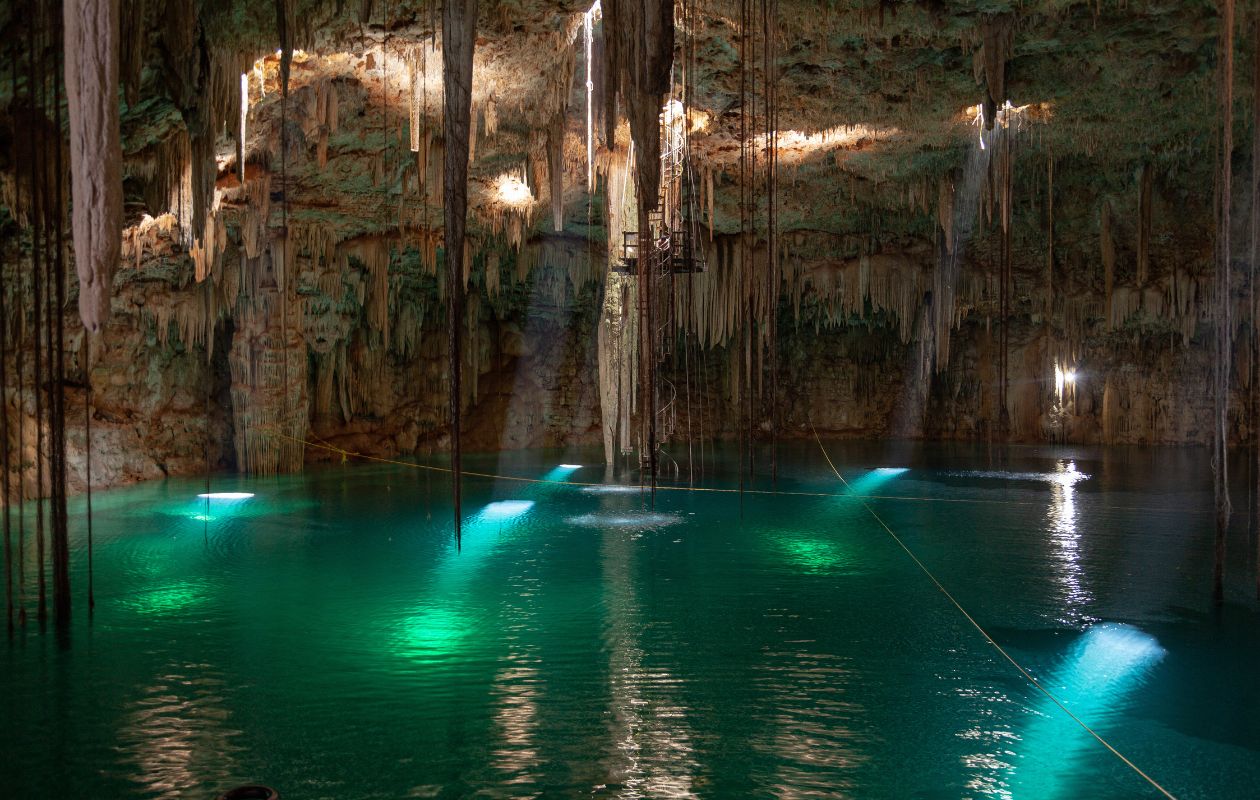
In the waters of this cenote you can spot remnants of the Mayan tradition, who made sacrifices here to the god of water and rain. Archaeologists have found human remains and jewelry underwater. While diving here you will find, among other things, black catfish.
An international competition in cliff diving – Red Bull Cliff Diving – was held at Ik Kil.
Ponde Rosa
A very interesting cenote with a bottom covered with green and yellow algae. Also You can find many fish including the sailfin mollusk.
The maximum diving depth in this well is 13 m, the halocline is at 11 m.
Ponde Rosa is connected to the El Coral cave.
Let’s go there together!
Diving in cenotes is definitely something that should be on every diver’s list. If you would like to take part in such an expedition and experience an unforgettable adventure, we invite you to participate in one of our expeditions. Costa Rica Divers, together with GoExploreWith.me, organizes many interesting projects and expeditions. So why not join professional divers on our next expedition? Good fun is guaranteed!


